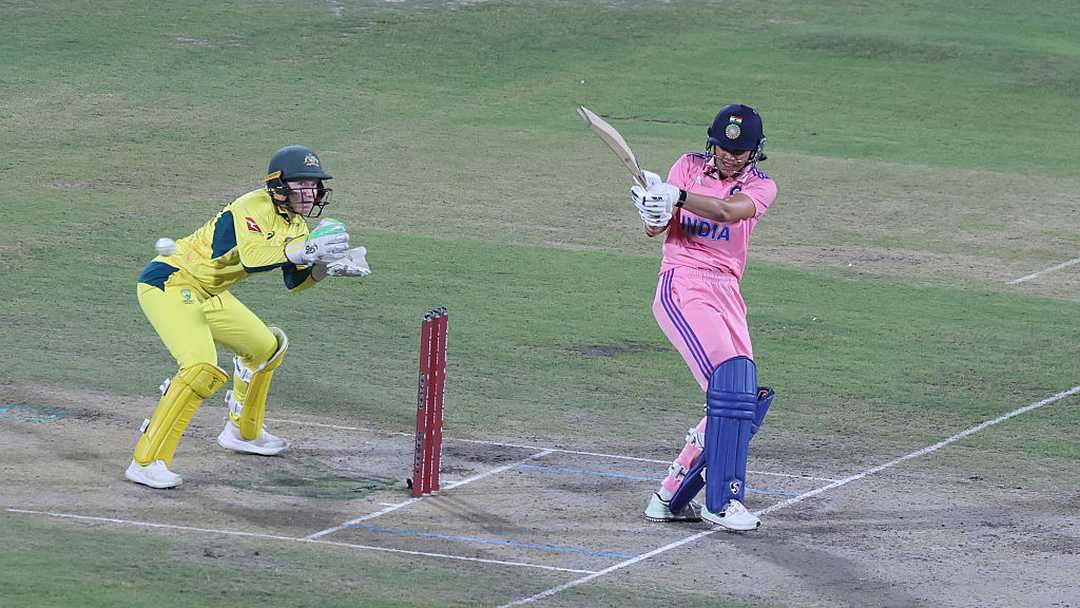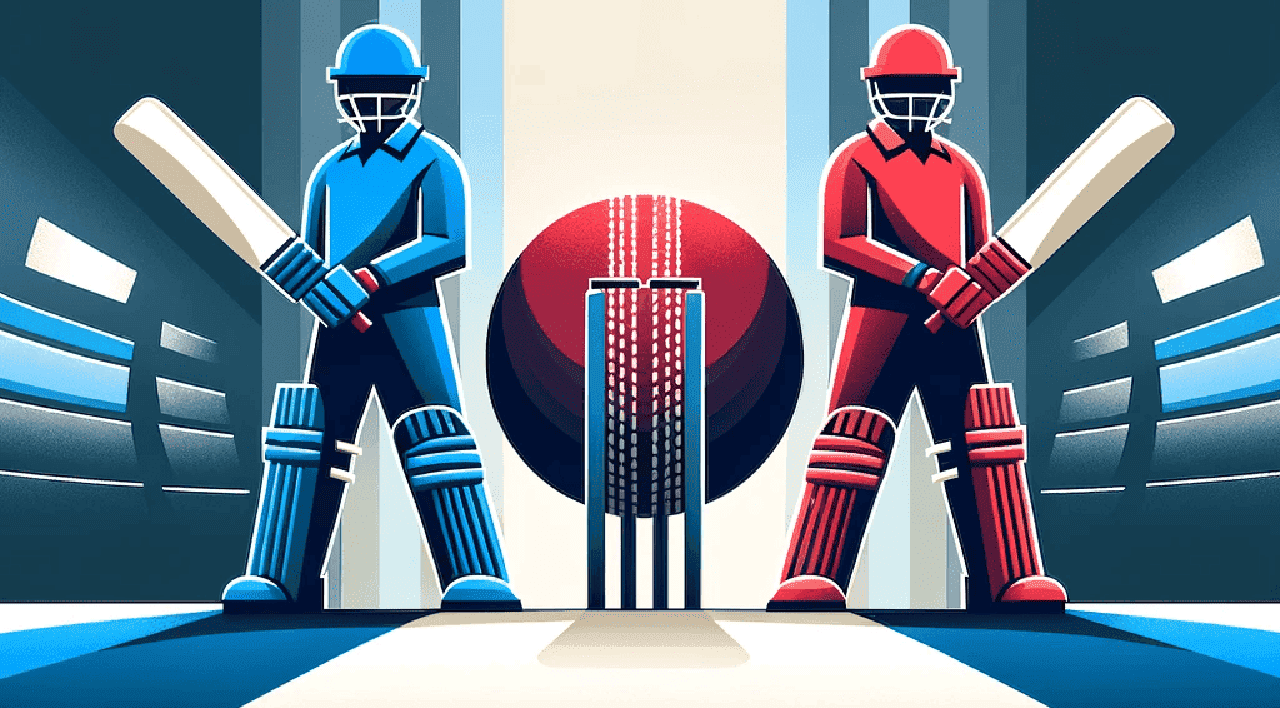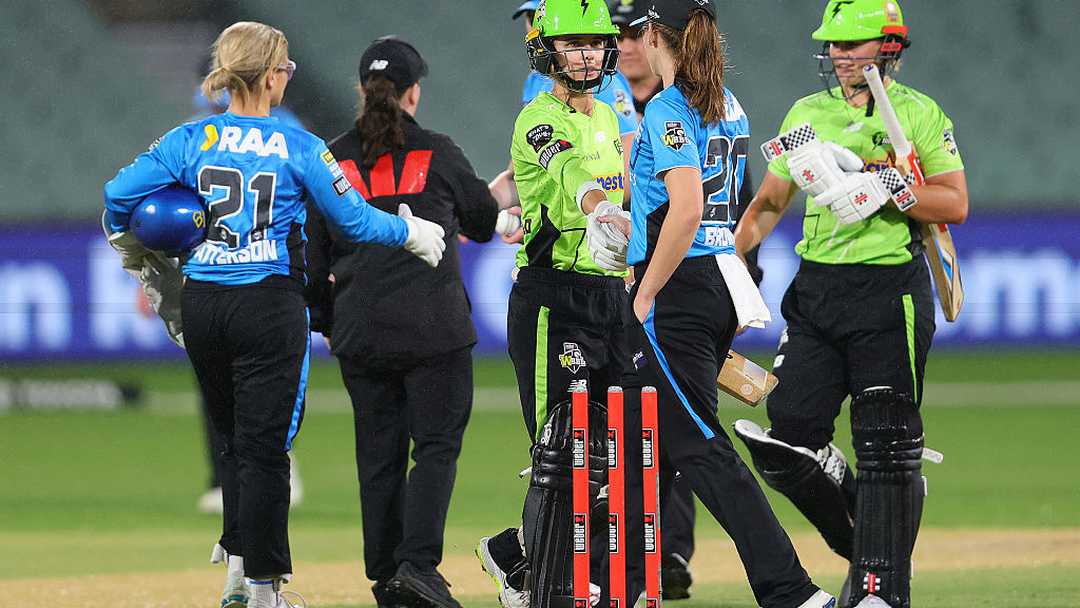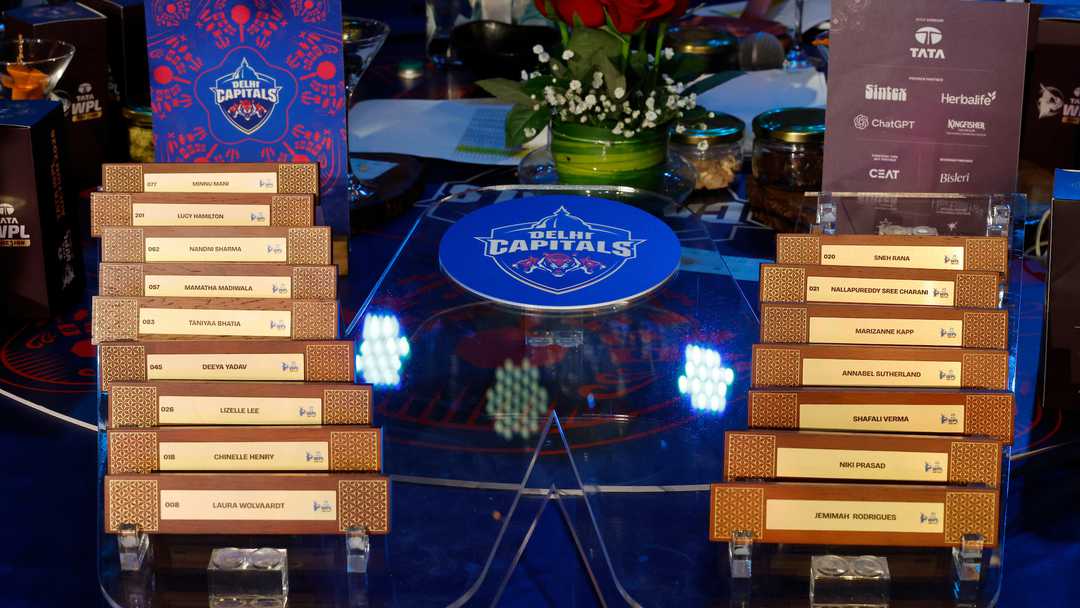
The World Cup big bang: Of batting boom, spin rise and India at the centre
If the 2017 World Cup put the women's game on the global cricket map, the 202s edition in India promises to be a game-changer. As the first ICC event hosted in India in almost a decade, its influence will be seismic. Australia and England have traditionally traded the silverware in the 21st century, but co-hosts India enter the tournament brimming with confidence. They's one of just three teams with a positive win-loss record in the current cycle, alongside the traditional powerhouses. The women's game has seen remarkable growth in the past three years, spurred on by the introduction of the WPL in India, a factor that will undoubtedly have an influence the outcome of this eight-team showdown.
A high-scoring tournament on the cards
The recent series decider between India and Australia in Delhi could well have foreshadowed what's to come. In that ODI, a staggering 781 runs were scored, more than 100 runs in excess of previous women's ODI record. This high-scoring trend is a hallmark of the current World Cup cycle. In fact, 16 of the top 21 ODIs with the highest match aggregates have occurred during this cycle, with 11 of those taking place since December 2024.
The year 2025 has seen a tectonic shift in women's ODI batting, with scoring rates and averages reaching unprecedented heights. Already, 30 individual centuries have been scored, putting the year on track to break the record for most runs in a calendar year. The power-hitting explosion is even more striking: 203 sixes have been hit in just 53 ODIs this year, putting the record of 208 in 2017 (from 70 matches) within reach. The frequency of a six has nearly doubled, dropping from one every 279 balls in the 2013-17 cycle to one every 148 balls now.
Women's ODIs across WC cycles in the 21st century
| Period | Mat | RR | Avg | 300+ totals |
|---|---|---|---|---|
| 2022-25 | 166 | 5.05 | 29.66 | 34 |
| 2017-22 | 185 | 4.55 | 19 | |
| 2013-17 | 186 | 4.13 | 10 | |
| 2009-13 | 156 | 4.09 | 4 | |
| 2005-09 | 165 | 3.95 | 3 | |
| 2000-05 | 166 | 3.59 | 22 |
For the first time in a World Cup cycle, the average scoring rate in women's ODIs has gone north of five an over, currently sitting at 5.05 runs per over. This represents a cycle-to-cycle jump of over 11%, the biggest across two successive World Cup cycles in the 21st century. Four teams now score above the world average, and three are scoring well in excess of 5.50 runs per over, a feat only achieved by Australia in the last cycle.
Teams in 22-25 vs 2017-22 cycle
| Team | Mat | Avg (22-25 | RR (22-25 | RR (2017-22
| AUS Women | 31 | 37.66 | 5.86 | IND Women | 38 | 35.86 | SA Women | 37 | SL Women | 31 | WI Women | 35 | PAK Women | 32 | BAN Women | 28 |
What conditions do India and Sri Lanka offer?
The pitches in India and Sri Lanka are set to produce a high-scoring tournament. India has hosted 18 ODIs since the last World Cup, with a remarkable scoring rate of 5.66 per over. Sri Lanka has hosted a similar number of games, with a scoring rate of 5.17.
Batting stats by host countries in 22-25 cycle
| Team | Mat | Avg | RR | 300+ totals |
| in India | 18 | in England | 24 | in Sri Lanka | 18 | in South | 12 | in Australia | 15 | in Pakistan | 30 | in Bangladesh | 14 | in
Will spin be the secret sauce to success?
The role of spin has steadily grown in women's cricket throughout the 21st century. The share of overs bowled by spinners has risen from 39% in the first cycle to 56.6% in 22-25
| Team | Spin | Spin % (22-25 |
| India | 58.22 |
| Sri Lanka | 74.3
| India | 58.22
| India | 58.22
| Sri Lanka | 74.3
| India | 58.22
| India | 58.22
| India | 58.22
| India | 58.22
| India | 58.22
| India | 58.22
| India | 58.22
| India | 58.22
| India | 58.22
| India | 58.22
| India | 58.22
| India | 58.22
| India | 58.22
| India | 58.22
| India | 58.22
| India | 58.22
| India | 58.22
| India | 58.22
| India | 58.22
| India | 58.22
| India | 58.22
| India | 58.22
| India | 58.22
| India | 58.22
| India | 58.22
| India | 58.22
| India | 58.22
| India | 58.22
| India | 58.22
| India | 58.22
| India | 58.22
| India | 58.22
| India | 58.22
| India | 58.22
| India | 58.22
| India | 58.22
| India | 58.22
| India | 58.22
| India | 58.22
| India | 58.22
| India | 58.22
| India | 58.22
| India | 58.22
| India | 58.22
| India | 58.22
| India | 58.22
| India | 58.22
| India | 58.22
| India | 58.22
| India | 58.22
| India | 58.22
| India | 58.22
| India | 58.22
| India | 58.22
| India | 58.22
| India | 58.22
| India | 58.22
| India | 58.22
| India | 58.22
| India | 58.22
| India | 58.22
| India | 58.22
| India | 58.22
| India | 58.22
| India | 58.22
| India | 58.22
| India | 58.22
| India | 58.22
| India | 58.22
| India | 58.22
| India | 58.22
| India | 58.22
| India | 58.22
| India | 58.22
| India | 58.22
| India | 58.22
| India | 58.22
| India | 58.22
| India | 58.22
| India | 58.22
| India | 58.22
| India | 58.22
| India | 58.22
| India | 58.22
| India | 58.22
| India | 58.22
| India | 58.22
| India | 58.22
| India | 58.22
| India | 58.22
| India | 58.22
| India | 58.22
| India | 58.22
| India | 58.22
| India | 58.22
| India | 58.22
| India | 58.22
| India | 58.22
| India | 58.22
| India | 58.22
| India | 58.22
| India | 58.22
| India | 58.22
| India | 58.22
| India | 58.22
| India | 58.22
| India | 58.22
| India | 58.22
| India | 58.22
| India | 58.22
| India | 58.22
| India | 58.22
| India | 58.22
| India | 58.22
| India | 58.22
| India | 58.22
| India | 58.22
| India | 58.22
| India | 58.22
| India | 58.22
| India | 58.22
| India | 58.22
| India | 58.22
| India | 58.22
| India | 58.22
| India | 58.22
| India | 58.22
| India | 58.22
| India | 58.22
| India | 58.22
| India | 58.22
| India | 58.22
| India | 58.22
| India | 58.22
| India | 58.22
| India | 58.22
| India | 58.22
| India | 58.22
| India | 58.22
| India | 58.22
| India | 58.22
| India | 58.22
| India | 58.22
| India | 58.22
| India | 58.22
| India | 58.22
| India | 58.22
| India | 58.22
| India | 58.22
| India | 58.22
| India | 58.22
| India | 58.22
| India | 58.22
| India | 58.22
| India | 58.22
| India | 58.22
| India | 58.22
| India | 58.22
| India | 58.22
| India | 58.22
| India | 58.22
| India | 58.22
| India | 58.22
| India | 58.22
| India | 58.22
| India | 58.22
| India | 58.22
| India | 58.22
| India | 58.22
| India | 58.22
| India | 58.22
| India | 58.22
| India | 58.22
| India | 58.22
| India | 58.22
| India | 58.22
| India | 58.22
| India | 58.22
| India | 58.22
| India | 58.22
| India | 58.22
| India | 58.22
| India | 58.22
| India | 58.22
| India | 58.22
| India | 58.22
| India | 58.22
| India | 58.22
| India | 58.22
| India | 58.22
| India | 58.22
| India | 58.22
| India | 58.22
| India | 58.22
| India | 58.22
| India | 58.22
| India | 58.22
| India | 58.22
| India | 58.22
| India | 58.22
| India | 58.22
| India | 58.22
| India | 58.22
| India | 58.22
| India | 58.22
| India | 58.22
| India | 58.22
| India | 58.22
| India | 58.22
| India | 5



